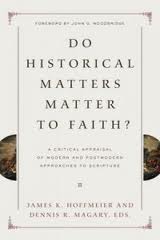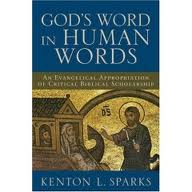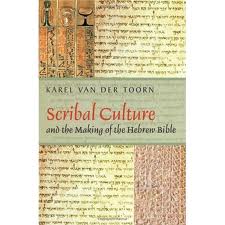 Earlier this year, Crossway released Do Historical Matters Matter to Faith?: A Critical Appraisal of Modern and Postmodern Approaches to Scripture edited by James K. Hoffmeier and Dennis R. Magary of Trinity Evangelical Divinity School in suburban Chicago (hereafter DHMMF)
Earlier this year, Crossway released Do Historical Matters Matter to Faith?: A Critical Appraisal of Modern and Postmodern Approaches to Scripture edited by James K. Hoffmeier and Dennis R. Magary of Trinity Evangelical Divinity School in suburban Chicago (hereafter DHMMF)
Briefly stated, the book is a sustained defense of what the authors consider to be the traditional and nearly universal understanding throughout church history of the Bible as the inerrant word of God. What prompted the volume was Kenton Sparks’s 2008 volume God’s Word in Human Words: An Evangelical Appropriation of Critical Biblical Scholarship. In that book, Sparks not only laid out his vision for the need for evangelicals to come to terms with critical scholarship (which includes acknowledging the errors of Scripture), but named names among evangelical scholars for failing to do so.
I recently finished reading DHMMF, but this is not a full review. I want to think more about how to approach this issue most constructively. Here I want to offer some initial thoughts and general impressions of the book. I intend to look at specific essays later this summer where these and others impressions will be drawn out with more specificity. It is likely that at that time other evangelical scholars will want to chime in on this site, too.
more about how to approach this issue most constructively. Here I want to offer some initial thoughts and general impressions of the book. I intend to look at specific essays later this summer where these and others impressions will be drawn out with more specificity. It is likely that at that time other evangelical scholars will want to chime in on this site, too.
So, here are some initial thoughts, in no particular order whatsoever.
1. I agree that, for the most part, DHMMF is a good faith effort to present a positive case for a traditional mainstream evangelical view of the Bible. Some of the contributors are clearly irked with Sparks, but by and large most contributors succeed in finding a balance between blunt disagreement and respect.
2. Most of the contributors are names well known among evangelicals. They are well trained and have thought through and written extensively on their positions, and what they say is worthy of respect and considered attention regardless of whether one agrees or disagrees. I found nearly all of them very much worth reading and learned things from them.
I will go so far as to say that there is no better contemporary exposition of the mainstream evangelical understanding of the nature of the Bible and how properly to respond to the pressing challenges of critrical scholarship (although see 4 below).
3. In edited volumes, it goes without saying that not all contributions are of equal value. Despite the impressive lineup, some essays obscured issues more then shed light, others seemed off topic, and one, in my opinion, actually undermined the project itself, Jens Bruun Kofoed’s essay “The Old Testament and Cultural Memory.” (The OT reflects not “the past” but how the past is remembered, i.e., how postexilic Israelites understood themselves in their cultural moment, which is something I could see Sparks saying and other authors in this volume contending against.)
4. The tone of the volume is set early on when inerrancy is claimed as the “central doctrine of Scripture among Western churches and … Scripture’s own teaching about its truthfulness” (p. 18). This is not up for discussion, and of course, given the book’s aim, one can see why. The problem, however, is that it is not too difficult to point out instances of “confirmation bias,” where (1) data favorable to the paradigm are emphasized, (2) otherwise ambiguous data are given generous interpretations, and (3) non-compliant data are obscured, ignored, or their shortcomings overstated.
To be clear, everyone is guilty of confirmation bias on some level–including Sparks. Human beings tend to hold on their narratives and seek ways to confirm them. But DHMMF does not rise above that fray; it is as susceptible to the charge of confirmation bias as a number of contributors accuse Sparks of being. DHMMF is a good example of this very dynamic: “Our model is an inerrantist model and here is how we are able to interpret the data in support that model.”
Specifically, one runs up again what I have called elsewhere the “it’s possible” argument, which is a common rhetorical device among evangelicals: cast doubt on the competing paradigm by pointing out it inconsistencies, thus establishing the (mere) possibility of one’s own, which is deemed a sufficient defense of that paradigm regardless of its own inconsistencies. The problem, however, is that there are many possible models for explaining Scripture, the critical model being one of them.
The central question to be asked is which model (inerrantist or critical) accounts best for as much the data as possible, as economically as possible, and leaving as little cognitive dissonance as possible in the wake. So, yes, essential Mosaic authorship of the Pentateuch is a “possible” model, but so is postexilic redaction of various oral and written traditions. The issue is which of these possible models answers the most questions concerning the available data while creating the fewest problems.
In this respect, I do not think the volume is successful in defending the absolute value of a mainstream inerrantist paradigm over against a critical one. It simply shows the possibility of how one can maintain that paradigm given an agreed upon starting point which then governs the interpretation of the data.
5. Again, in view of the stated goal of the book, alternate models are generally discounted insofar as they do not affirm an inerrantist starting point. With one or two exceptions, I did not see much acknowledgment for the genuine challenges raised in the moden study of Scripture. More often than not, non-traditional (non-inerrantist) views are attributed to modernist and postmodernist influences (the implication being that the current evangelical paradigm is free of such influences). In several essays, one gets the impression that the entire modern study of Scripture is an act of spiritual rebellion, though the essays as a whole do not take this approach.
 6. The editors did a very good job making sure the hot button issues were addressed in the book. Personally, I would have liked to have seen some discussion about myth in the Old Testament, but there was no discussion of Genesis 1-11 (other than one unfortunate comment in a footnote dismissing myth as a viable category for inerrancy, p. 64, n. 25).
6. The editors did a very good job making sure the hot button issues were addressed in the book. Personally, I would have liked to have seen some discussion about myth in the Old Testament, but there was no discussion of Genesis 1-11 (other than one unfortunate comment in a footnote dismissing myth as a viable category for inerrancy, p. 64, n. 25).
I would also have liked to have seen some discussion of scribal culture in the ANE and in ancient Israel to address when the books of the Old Testament could have been written and for what reason (e.g., Karel van der Toorn, Scribal Culture and the Making of the Hebrew Bible). I found a persistent undertone in several of the essays of a modern western “bookish” mentality, which does not reflect how ancient, largely oral, cultures went about the task of writing.
Along with that, the role of the exile in kick-starting the formation of the Hebrew Bible as we know it, a staple of critical scholarship, is not addressed.
7. I appreciate the division of the book into four sections: theological prolegomena, OT criticism, NT criticism, and archaeology. For my tastes, an expanded section on OT archaeology and perhaps one or two (not five) theological essays would have provided more space to address some substantive historical issues. (I also think Hoffmeier’s essay on the exodus needed to be grouped among the archaeological essays, not the theological prolegomena.)
8. I don’t mean to make enemies here, but I do wish this volume could have been published with Eerdmans, Baker, or IVP. Crossway has become to go-to publisher for defensive expositions of fundamentalism and evangelicalism, and I fear it may keep this volume from attracting critical attention it deserves from scholars outside of those arenas.
OK. I said brief–and I was, but this is still longer than I had intended. There is clearly a lot the authors have given us to think about, and I recommend the volume for appreciation of a learned defense of an evangelical paradigm and for critical appraisal.
